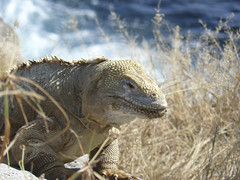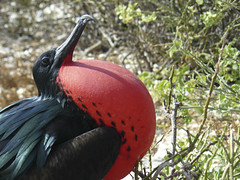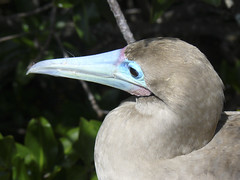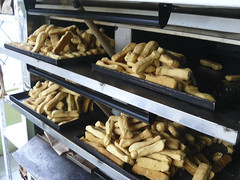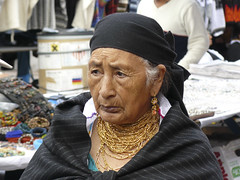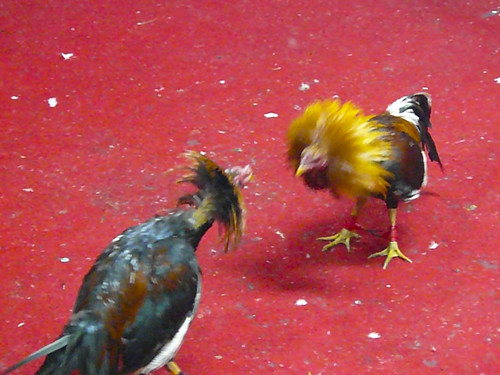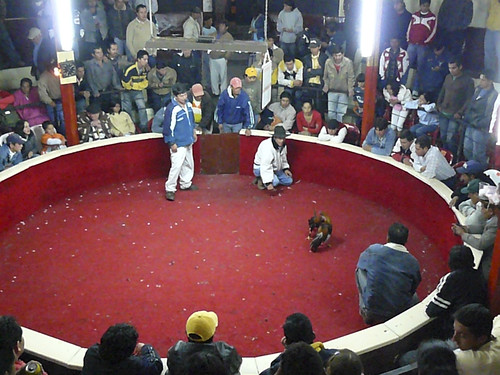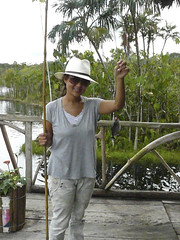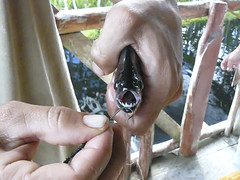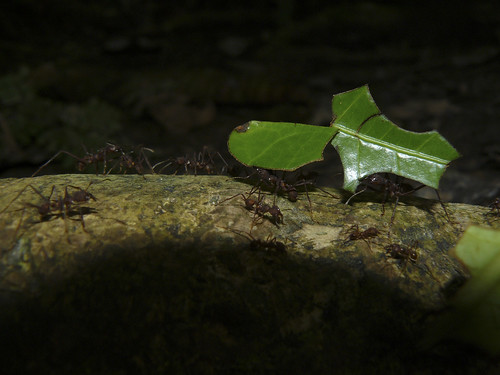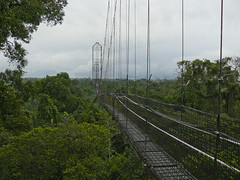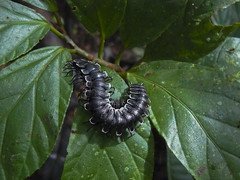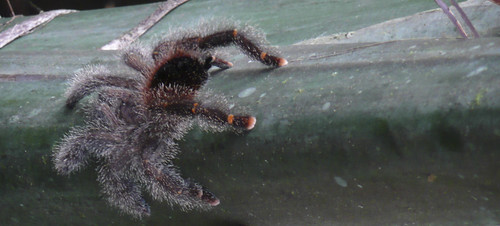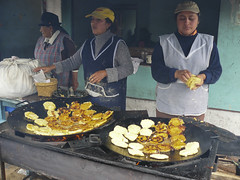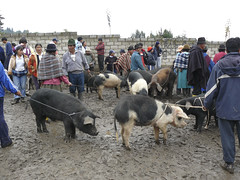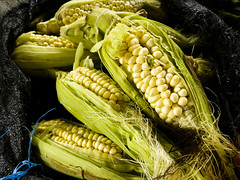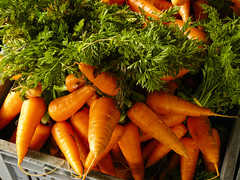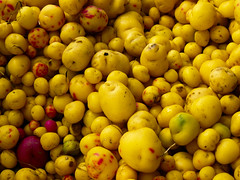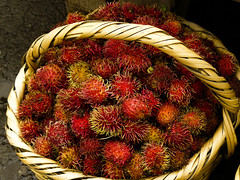Our Galapagos Island trip was amazing. There are animal species that are endemic to the islands, and for that reason makes the Galapagos special. We stayed on board of a 100 ft. yacht with 13 other guests. The weather was perfect.
Each day we visited a different island, snorkeled, and hiked on the island for a few hours. On the island of Santa Fe we went in search of the land iguanas, in the mangroves of Santa Cruz we went to see the sea turtles, on Genovesa Island we saw the blue and red-footed boobie, the nazca boobie and the frigate birds. The male frigate bird spends his time building a nest and inflates his red sack in an attempt to attract a mate. During our hike one male frigate swooped down and pecked Mike on the head–probably mistaking his shiny dark hair for twigs that would be a good addition for his nest. At Sullivan Bay on Santiago Island we walked on lava flow only 100 years old. And we visited the giant tortoises on Santa Cruz.
 My favorite part was snorkeling and watching all the underwater sea life. We went swimming with the penguins, sea lions, tons of different fish and a white tipped shark, which we followed until it double backed on us!
My favorite part was snorkeling and watching all the underwater sea life. We went swimming with the penguins, sea lions, tons of different fish and a white tipped shark, which we followed until it double backed on us!
The Galapagos penguins would swim around diving down, then come back up for air. Once it stopped right in front of me, looked into my eyes pondering my existence, then instinct kicked in and off it went in chase of a meal. Sad to say, though, they aren’t so skilled at catching fish. Even with huge schools of fish, the penguins didn’t have much success– chasing the fish back and forth, back and forth, but missing each time. I wonder if they go hungry most days.
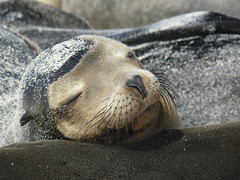 Unlike the penguins, I did see a bird dive into the water, and with amazing accuracy catch a fish. Pretty amazing to see what goes on below the surface of the water…the bird (sorry, I’m not sure what kind it was) dove down about 12 feet into a school of fish, there was a small commotion of water, and bang, it got a fish. And as quickly as it dove into the water, it ascended nearly as fast out of the water.
Unlike the penguins, I did see a bird dive into the water, and with amazing accuracy catch a fish. Pretty amazing to see what goes on below the surface of the water…the bird (sorry, I’m not sure what kind it was) dove down about 12 feet into a school of fish, there was a small commotion of water, and bang, it got a fish. And as quickly as it dove into the water, it ascended nearly as fast out of the water.
The sea lions are also fun to snorkel with. Slow as they are on land, underwater they jet past like a bullet, swimming circles around us. They are also much larger than the penguins, so when they stop abruptly in the water to stare, it’s a little alarming. Lucky for us though, the sea lions aren’t bothered with people snorkeling in their waters.
